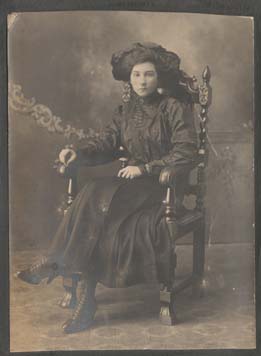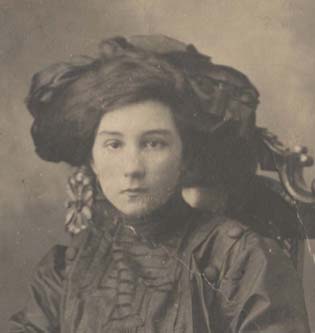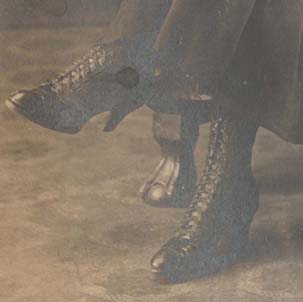Sign up for the Family Tree Newsletter Plus, you’ll receive our 10 Essential Genealogy Research Forms PDF as a special thank you!
Get Your Free Genealogy Forms
"*" indicates required fields
Pamela Fisher sent in this gorgeous photo of a confident and determined young woman. Her direct gaze shows she’s comfortable in front of the camera. The question is, of course, who is she?
Pamela owns an old book that had a small collection of photos stuck in the pages. The book and the photos belonged to the Fisher family. Since the provenance (history of ownership) of the items suggested young woman was a member of the Fisher family, Pamela thought this would be an easy ID. She thought it must be Rilla Cooper (b. 1860)who married into the Fisher family and that the photo was taken in Spokane, Wash., circa 1880. Rilla is a mysterious ancestor her family doesn’t know much about.
Unfortunately, this identification is incorrect. As soon as I saw the image, I knew it wasn’t taken in the 1880s, when women’s dresses had fitted bodices and large buttons. From head to toe, this young woman is the epitome of early-20th century fashion.
When I called Pamela to discuss the picture she wondered, “If not Rilla, then who?” That’s the exactly the problem. Let’s stack up the clues and see if it’s possible to narrow the time frame.
Hair: In the first decade of the 20th century, women wore their hair full. Creating this hairstyle required a “rat,” a device made from your own hair harvested from a hair brush and formed into a sausage roll or (artificial versions existed). Women’s magazines such as Ladies Home Journal ridiculed the extreme hairstyles of this period by showing examples of good and bad hair.
Hat: It’s difficult to see, but it appears that this young woman wears a hat. Large hats were the style in the decade from 1900 to 1910. In this case, it looks like a collection of ribbons.
Dress: In the early years of the 1900- to-1910 period, dresses featured high necklines and lace insets in the yoke; in the latter part of the decade, large buttons added detail to the yoke. Corsets, which women wore beginning in their teens, created narrow waistlines.
Late-19th century dress reform advocates changed the way women dressed. In the 20th century many women worked in offices and needed functional, easy-care clothing. The two-piece outfit—blouse and skirt—was a necessity.
A quick glance at the 1909 Sears catalog shows blouses, skirts and hairstyles just like the one worn by this girl. You can view them in Joanne Olian’s book, Everyday Fashions 1909-1920 as Pictured in the Sears Catalog (Dover Publications). Shirts with buttons and tucks were commonplace from about 1905 on.
Shoes: Pamela wondered why this girl crossed her legs. It’s not uncommon to see women in this time frame posing this way, but most women of the time believed crossing one’s legs was not in good taste.
Perhaps this girl wanted to show off her boots. They’re highly polished leather walking boots laced up the front. It looks like they have a bishop heel that tapers from the heel to the bottom. If that’s true, this detail helps date the image. According to Nancy Rexford’s Women’s Shoes in America, 1795-1930 (Kent State University Press), this type of heel was popular through 1905, then it was replaced by other shapes.
So who is this stylish young woman? If the photo was taken about 1905, Pamela wonders if she could be Rilla (Cooper) Fisher’s daughter Elizabeth who was born between 1883 and 1885. In 1905, Lizzie would be 20 to 22 years of age.
ADVERTISEMENT







